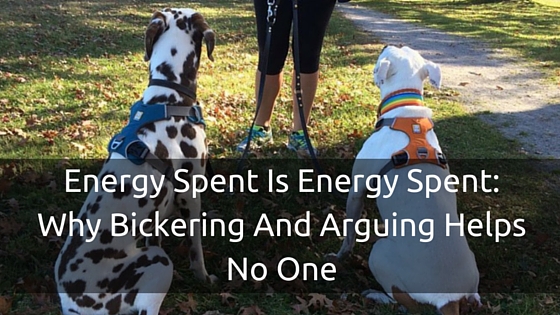Why You Should Be Using #Hashtags

If you’ve spent any time on social media you’ve probably seen a hashtag. Each platform has its own hashtag culture, and some are better than others for growing engagement.
What is a Hashtag?
At its most basic, the hashtag acts like a preprogrammed search link. When you click it you are actually searching for multiple posts that have used that hashtag, whether you follow the person posting or not. The reverse is also true. If you post with a hashtag and someone clicks the link they will be able to see your post whether they follow you or not.
You can probably already see how you can grow followers and clients using hashtags. They allow you to reach new consumers.
There is a difference between a tag and a hashtag. A tag is mentioning another person or corporation or account on the social media platform you’re using. A hashtag is a sentence or sentiment in a string of words following a pound or hash sign: #.
Where can I use hashtags?
While Facebook allows you to use hashtags and have them work, they sort of counteract the privacy settings most users use on their personal accounts. In order for a hashtag to be seen outside your friends list the post has to be viewable by the public, which means changing your privacy settings or using them on your business page. However, studies show that hashtags on Facebook do not increase engagement, so best to spend time on other platforms. (Check out this eBook on Facebook Marketing Strategies to get the most out of that platform.)
Hashtags work on Facebook, Twitter, Instagram, Youtube, Pinterest, and Google+. Choose one or two platforms to play with hashtags at first, otherwise it can be overwhelming. For instance Instagram adds “of instagram” to a lot of the hashtags. While Twitter might use #DeafDogs, Instagram will use #DeafDogsofInstagram. Spend some time searching for hashtags on your platforms and see how people are using them there.
Be sure not to overdo it. Hashtag soup is difficult to read and it can be confusing what conversation you’re joining. One or two hashtags is enough.
Let’s set some goals.
Promoting your own business. Promoting a cause or charity or sentiment. Promoting another entity like a school or member organization or corporation. The first two are probably self explanatory. Why would you want to promote an entity other than yourself? Because chances are pretty good that entity will retweet or share your post to their followers, getting you new followers.
Ways to use hashtags.
1. Get involved in an existing hashtag campaign.
National Day / Month campaigns are a great way to reach beyond your existing followers. Using hashtags like : #NationalPetDay or #AdoptADogMonth. APDT does their Train Your Dog Month in January. For 2017 they are promoting the hashtag #APDTTrainYourDogMonth2017.
You could post photos of classes, photos of training, posts promoting group classes, etc. and add the hashtag and join in the campaign to promote dog training.
Other events include AKC championships, national dog shows, learning and science conferences and webinars.
2. Create your own hashtag contest.
Photo contests are a tried and successful way to promote your business. That said, you’ll have a lot of competition in this arena. The idea is to promote a contest that participants can only join by using a hashtag. You can have entries use your business hashtag or something unique. #MyBusinessPhotoContest might get the job done, but if you want to think broader you might target your city location #AtlantaTrainMyDog or #AtlantaFreeGroupClass. You could target a type or breed of dog #TinyDogsAreAwesome or #PittiesAreAwesomeContest. Use your imagination and spend some time promoting the contest on your web page and social media channels for a few weeks before the contest begins.
3. Hashtag your location.
“Registration for Group Dog Classes in #Cincinnati starting today! Check it out!” And add a link to your registration page. In theory, you could also add a hashtag for #dog, however, remember the hashtag is a link to a preprogrammed search page, which means #dog and #dogs are two different searches. If you’re going to add a second hashtag you might need a few variants so you hit both result pages.
4. Hashtag for retweets.
This one is quite variable, so sit down and ponder a bit. Photos and positive mentions are more likely to be retweeted and shared.
An easy example of this one would be to post a photo of a team passing the Canine Good Citizen test. Along with the photo is “Congratulations to Riley on passing his #AKCCGC test! @AKCDogLovers” This one uses a variant of the CGC hashtag and tags the official AKC account. AKC retweets quite a few of these, so you have a good chance of getting shared with all of their followers. There are variations of the #CGC hashtag, #CGC, #CanineGoodCitizen, #AKCCanineGoodCitizen, etc. Do a search or two before posting. The higher tests can be more confusing, #AKCACGC or #AKCAdvancedCGC or #AKCAdvancedCanineGoodCitizen. Again, do some search and see which one has the most recent usage.
Another example would be to tag or hashtag a company which produces products you use and like. “Check out Riley rocking his #BalanceHarness and loose leash walking in class!” “Riley thinks peanut butter and #Kongs are a perfect match! @Kong” “Riley drools for the entire 3 minutes it takes to make @HonestKitchen #Zeal.”
You get the idea. The point of this one is to support those products you like by helping to promote them. Depending on whether or not they have a social media person that’s on the ball, your post may be shared or not. Give a tag or product hashtag a few a tries. If your post isn’t shared then move onto another entity to promote.
One of the easier ways to do this is to simply share posts from organizations. A share / retweet may get you a few “likes” and followers.
5. Promoting a cause or sentiment.
These usually have their own hashtags, but followers are loyal to these niche markets so some research on your part may be needed. #PibbleLove, #Tripawds, #DeafDogs #WhoAdoptedWho #RescuedDogsofInstagram are causes and sentiments you can use on social media. Do some searches of some of your favorite types of dogs to work with, some charities you like, some causes you support and make note of the hashtags they are using. This can be being part of a much bigger conversation, but your existing followers will get to see what you care about, what you promote, and that’s a good reason to hire you. You care.
A Few Final Hashtag Rules
- Keep hashtags short. 20 characters should be the max.
- Keep spelling accurate. Remember that things like contests may be passed verbally, so keep it “positive” not “pawsitive.”
- If you don’t know what a hashtag is saying, don’t use it. You’ll see a lot of “trending” hashtags which are usually used for causes or sentiments. If you don’t know what it’s for either research it or don’t use it. Pushback for hijacking a hashtag is pretty brutal
- Use tags and hashtags sparingly by switching between posts that use them and that don’t use them.
- Join existing conversations. Participation goes both ways. If you’re just posting and not participating you probably won’t get very far. Share, reply, and comment on posts you like.
- Be cautious of participating in political and religious causes.
Resources
RiteTag has a free search to check on how certain hashtags are doing. In-depth reports require a subscription, but the free version should get you started.
Dog Training Topic Calendar & Business Tips
Subscribe to The Modern Dog Trainer Blog to get our monthly dog training topic calendar for social media or blogging ideas. The calendar shows “National Month” and “National Days” so you can use those hashtags in your planning.
Don’t forget to let us know what you want to learn more about in the form below!
[mc4wp_form id=”2494″]




